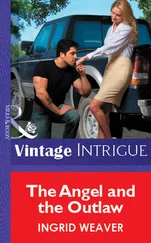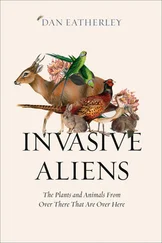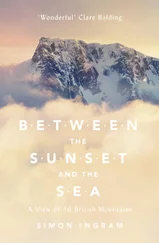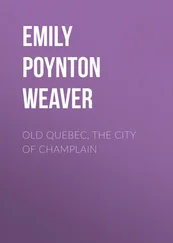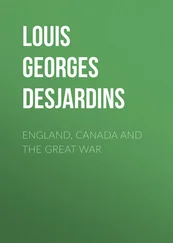Emily Poynton Weaver - Canada and the British immigrant
Здесь есть возможность читать онлайн «Emily Poynton Weaver - Canada and the British immigrant» — ознакомительный отрывок электронной книги совершенно бесплатно, а после прочтения отрывка купить полную версию. В некоторых случаях можно слушать аудио, скачать через торрент в формате fb2 и присутствует краткое содержание. Жанр: Путешествия и география, История, foreign_edu, foreign_antique, foreign_prose, на английском языке. Описание произведения, (предисловие) а так же отзывы посетителей доступны на портале библиотеки ЛибКат.
- Название:Canada and the British immigrant
- Автор:
- Жанр:
- Год:неизвестен
- ISBN:нет данных
- Рейтинг книги:3 / 5. Голосов: 1
-
Избранное:Добавить в избранное
- Отзывы:
-
Ваша оценка:
- 60
- 1
- 2
- 3
- 4
- 5
Canada and the British immigrant: краткое содержание, описание и аннотация
Предлагаем к чтению аннотацию, описание, краткое содержание или предисловие (зависит от того, что написал сам автор книги «Canada and the British immigrant»). Если вы не нашли необходимую информацию о книге — напишите в комментариях, мы постараемся отыскать её.
Canada and the British immigrant — читать онлайн ознакомительный отрывок
Ниже представлен текст книги, разбитый по страницам. Система сохранения места последней прочитанной страницы, позволяет с удобством читать онлайн бесплатно книгу «Canada and the British immigrant», без необходимости каждый раз заново искать на чём Вы остановились. Поставьте закладку, и сможете в любой момент перейти на страницу, на которой закончили чтение.
Интервал:
Закладка:
Other places at Ottawa of national interest, either for what they are or for what they may become, are its museums, its National Art Gallery, its Royal Mint and the Archives Building, which houses a collection of extremely valuable historical documents.
IV
LANDS AND THE PEOPLE
IN my last chapter I mentioned the ungranted public lands as amongst the assets of the Dominion. Apart from the vast area of land north of the limits of the provinces, the Crown, according to a recently published official estimate, still holds the title to many millions of acres of “ungranted, surveyed public lands in Manitoba, Saskatchewan, and Alberta in addition to a vast quantity of good land yet unsurveyed.” The public lands in the Eastern Provinces are owned by the provinces, but in every section of Canada lands may be obtained by the bonâ fide settler, either as free grants, or at a very small rate of payment. This matter will, however, be referred to again later.
Lands offered for settlement in the provinces of the middle west are laid out in blocks six miles square, called townships. Each of these townships is divided into thirty-six sections of one mile square. The sections are again divided into quarters; and the homesteads offered as free grants by the Dominion government on certain conditions as to residence upon and improvement of the land; each contain one-quarter section, or one hundred and sixty acres. (For the land regulations as to free grants and pre-emptions, see Appendix, Note B, p. 297 Конец ознакомительного фрагмента. Текст предоставлен ООО «ЛитРес». Прочитайте эту книгу целиком, купив полную легальную версию на ЛитРес. Безопасно оплатить книгу можно банковской картой Visa, MasterCard, Maestro, со счета мобильного телефона, с платежного терминала, в салоне МТС или Связной, через PayPal, WebMoney, Яндекс.Деньги, QIWI Кошелек, бонусными картами или другим удобным Вам способом.
.) Within a certain area two sections in each township have been allotted to the Hudson’s Bay Company, two are reserved for the support of schools, sixteen are held for sale or have been given as land grants in aid of colonization railways, and the remaining sixteen are, or have been, open to homesteaders.
During the fiscal year of 1911-12, over thirty-nine thousand heads of families, or single men, made homestead entries, taking up over six and a quarter millions of acres. In the same year the railway companies and the Hudson’s Bay Company sold between eighteen and nineteen million acres of land; and it is predicted that before another decade has gone by “Canada’s balance of population will be west of Lake Superior.” This may or may not be true, for there is no province in Canada that is not well able to support a much larger population than it has at present; and in every province new opportunities are offering themselves.
In connection with its ownership of the crown lands, the Dominion government assumed at Confederation the guardianship of the Indians, descendants of the ancient lords of the soil. In the drama of Canadian history, especially in its earlier scenes, the Indians play a part that is tragically interesting, whether regarded from the point of view of the settlers, or from that of the wild people themselves, as they were driven deeper into the wilderness, and sank gradually from the position of being reckoned with and feared into that of a comparatively feeble folk, bewildered by the necessity of adaptation to new conditions.
The Canadian Indians, though of many different tribes, have been placed by ethnologists in three or four chief groups. The largest group numerically, and the most widespread, was the Algonquin, to which belong the Micmacs of Nova Scotia, the Ottawas and Ojibways of Central Canada, the Crees of the Middle West, and many other tribes.
A second group—the Huron-Iroquois—was, in many respects, remarkable. The Iroquois tribes are notable for having entered into a confederation from which they were often called “The Five Nation Indians.” This alliance gave them a vast advantage over isolated tribes in their savage warfare; and made them for the best part of a century a menace and a terror to the French. They occupied a very advantageous position in what is now New York State, upon a “Height of Land” from which flowed streams in every direction, serving as waterways for their canoes and enabling them to descend with ease and rapidity into the enemy’s country. They were usually friendly to the English colonists; but again and again during the early days did their utmost to destroy the infant settlements of the French and to annihilate the latter’s Indian allies.
Many years later the famous Mohawk, Brant, and others of the Iroquois sided with the English in the Revolutionary War, and at its close were granted lands like other loyalists in Canada. The city of Brantford, on the Grand River, was named after the chief, and near to it is the “Mohawk Reserve,” comprising over forty-three thousand six hundred acres, where some four thousand Indians still dwell.
Akin in race and language to the Iroquois, but in a constant state of hostility to them, were the Hurons, living near the Georgian bay. Amongst them, in the seventeenth century, the Jesuit fathers from France established, at great sacrifice of ease and comfort, a flourishing mission, but in 1648-49 the mission villages were swept out of existence by hordes of Iroquois; many of the missionaries were martyred, and the Hurons, utterly broken, were driven to seek refuge near the French towns.
The Iroquois and Hurons were in some respects more advanced than the Algonquin tribes. They had the art of making strong palisades about their towns, of several concentric rows of tree trunks planted upright in the ground, and they used shields of skin and a curious armour of twigs interwoven with cords, which formed a great protection against arrows. They also cultivated the ground to some extent, grew maize and sunflowers, and kept hogs. The Algonquins, on the other hand, trusted for food entirely to hunting and fishing, and to what they could gather in the woods.
None of the Indians had a written language, but some practised picture-writing, that is, making rude drawings on bark or skins for the conveyance of information; and they used also to weave shell beads, called “wampum,” into collars and belts of curious devices, which represented certain ideas. These belts were used as mementoes and records of matters of importance, such as a treaty made with another tribe; and were given into the custody of old men who were expected to remember and explain their signification.
In this connection it is interesting to recall that about the middle of last century, a Methodist missionary, Evans, invented a method of writing the Indian languages, which can be learnt by an Indian of ordinary intelligence in a very few lessons. The signs represent syllables, not letters to be combined into syllables. This system of reducing the languages to writing has made possible a very large circulation of the Bible, or parts of it, amongst Indians, who would have had no opportunity of learning to read by such methods as our own. Liberal provision, however, has been made for the education of the Indians dwelling in the more settled regions.
A third great group of the aborigines of Canada comprises the Indians of the western mountains and the Pacific Coast and islands. These tribes were generally fierce and warlike; and were remarkable for their huge canoes, each made from the trunk of a single tree; for their enormous, grotesquely-carved totem poles; and for many singular customs.
Читать дальшеИнтервал:
Закладка:
Похожие книги на «Canada and the British immigrant»
Представляем Вашему вниманию похожие книги на «Canada and the British immigrant» списком для выбора. Мы отобрали схожую по названию и смыслу литературу в надежде предоставить читателям больше вариантов отыскать новые, интересные, ещё непрочитанные произведения.
Обсуждение, отзывы о книге «Canada and the British immigrant» и просто собственные мнения читателей. Оставьте ваши комментарии, напишите, что Вы думаете о произведении, его смысле или главных героях. Укажите что конкретно понравилось, а что нет, и почему Вы так считаете.
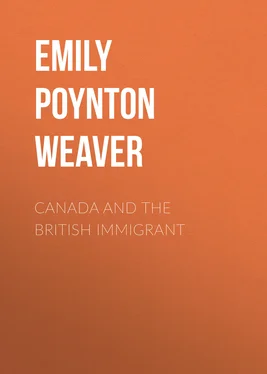

![О Генри - Граф и свадебный гость [Черное платье] [The Count and the Wedding Guest]](/books/405331/o-genri-graf-i-svadebnyj-gost-chernoe-plate-th-thumb.webp)

